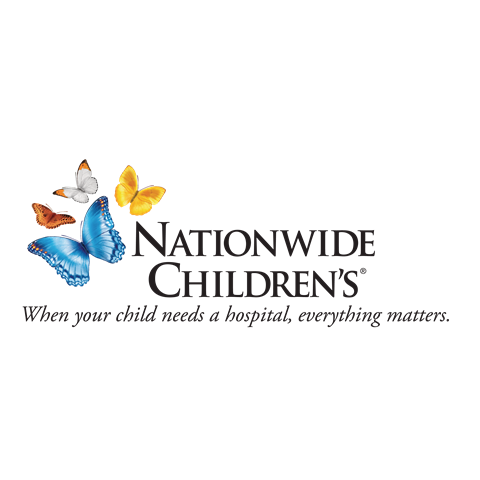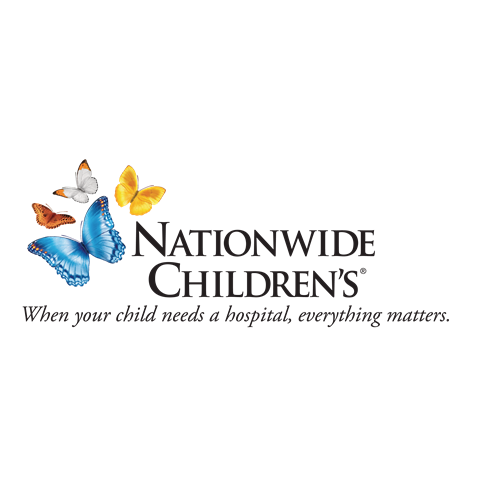Available Technologies
# of Displayed Technologies: 9 / 9
Categories
AAV Delivery of a Combined U7snRNA Exon Skipping Tool with a Transplicing Molecule to Replace Defective mRNA Parts
TS-002304 — Researchers at Nationwide Children’s Hospital have created a new, improved method of mRNA exon replacement for any disorder through the combination of a transplicing molecule (PTM) and U7 small nuclear RNA constructs exon skipping tool in an AAV vector.
To establish proof of concept, the team tested for mutations in exon 1 and 1 of the SCN2A gene. Two constructs will mediate both exclusions of the endogenous exons 1-2, where one bears a disease-causing mutation, and swaps them with a wild type or enhanced exon 1-2 transplicing molecule. A self-complementary (sc) and/or single stranded adeno-associated virus (AAV) serotypes that target the central nervous system and muscles will deliver the combined approach. These first two products force replacement of mutated SCN2A exon 1-2 for a subpopulation of patients affected by SCN2A disorders.
This combination shows immense potential application in its replacement of any mutated mRNA piece.
- College:
- Inventors: Wein, Nicolas; Meyer, Kathrin; Rodriguez, Yacidzohara
- Licensing Officer: Eidahl, Jocelyn
New Gene Therapy Strategies to Treat Friedreich’s Ataxia
TS-002231 — About 1 in 50,000 people in the United States are affected by Friedreich’s Ataxia, an inherited disorder caused by a gene which damages the nervous system causing difficulties walking, slow speech, fatigue and sensation changes. Researchers at Nationwide Children’s Hospital developed an innovative way to modulate promoter activity to alter Frataxin gene expression using U7 small nuclear RNA. The U7 snRNA has mammalian origin, can have sustained and stable expression as it acts as a promoter and is safe for human patients. Additionally, the method suggests using U& snRNA with a tail to attract endogenous activator proteins which bind to DNA. The method can be combined with other gene replacement strategies to add additional U7-activators and using promoter regulation to activate promoters to upregulate a gene expression of a certain gene like Friedreich’s Ataxia.
- College:
- Inventors: Wein, Nicolas; Almeida, Camila; Meyer, Kathrin
- Licensing Officer: Eidahl, Jocelyn
tRNA.AAV Gene Therapy Approach to Treat Rare Diseases
TS-002225 — Gene therapy researchers at Nationwide Children’s Hospital created an AAV medicated gene therapy for the treatment of neurological, neuromuscular and muscular disorders like SCN2A, Duchenne Muscular Dystrophy, Pitt Hopkins Syndrome, etc. Their therapy suggests using AAV gene therapy to deliver tRNA to read through premature stop codons caused by missense mutations preventing protein truncation. Multiple tRNAs will be inserted in an AAV construct to target multiple mutations. The therapy will effectively deliver genes of interest to the target cell types and can be adapted to other disorders through changing serotypes to switch targeted cell types.
- College:
- Inventors: Dennys, Cassandra; Meyer, Kathrin; Wein, Nicolas
- Licensing Officer: Eidahl, Jocelyn
New Therapeutic Approach for ALS Using shRNA, U7 RNA Skipping and/or Combination Approach
TS-002223 — Amyotrophic Lateral Sclerosis (ALS) is a neurogenerative disease that impacts the nerve cells of the brain and spinal cord causing muscles to weaken and affecting physical function. Researchers at Nationwide Children’s Hospital have created a therapy approach to reduce the expression of the superoxide dismutase 1 gene (SOD1). The gene therapy combines the usage of AAV small hairpin RNA sequences (shRNA) and U7 small nuclear RNA (snRNA). The C9ORF72 repeat expansion is the known leading cause of ALS. The AAV shRNA will downregulate the SOD1 gene and fight against the C9ORF72 expansion while the U7 snRNA will induce exon skipping of the SOD1 mRNA and C9ORF72 repeat expansion to create an out of frame skipping that will degrade the transcripts. Combining the two approaches into a single vector could create an efficient gene therapy for ALS while treating a larger patient subpopulation.
- College:
- Inventors: Meyer, Kathrin; Likhite, Shibi; Wein, Nicolas
- Licensing Officer: Eidahl, Jocelyn
AAV-U7snRNA to Modulate Promoter Activity for Myotonic Dystrophy
TS-002222 — Myotonic dystrophy can occur at any age when there are mutations to the DMPK gene which causes patients to experience muscle weakness throughout the body. Researchers at Nationwide Children’s Hospital developed new technology to modulate the promoter activity to alter the DMPK gene expression by using U7 snRNA with a tail encoded with specific binding sequences. The tail will attract endogenous activator/repressor proteins which naturally exist in mammalian cells and bind to DNA sequences or secondary tissue. The binding of the protein to a promoter will allow for promoter regulation to activate or repress promoters; therefore, upregulating or downregulating gene expression of a certain gene like the DMPK gene.
- College:
- Inventors: Wein, Nicolas; Almeida, Camila; Meyer, Kathrin
- Licensing Officer: Eidahl, Jocelyn
 AAV Vectors Containing U7small Nuclear RNA (U7snRNA That Interferes With The CTGexp or Silences DMPK)
AAV Vectors Containing U7small Nuclear RNA (U7snRNA That Interferes With The CTGexp or Silences DMPK)
TS-001229 — Mutations in the Myotonic Dystrophy Protein Kinase gene (DMPK) cause an autosomal dominant inherited disease referred to as Myotonic Dystrophy. Myotonic Dystrophy affects more than 1 in 8,000 people worldwide. Myotonic dystrophy results in progressive muscle weakness, stiffness and wasting. Currently, here are no treatments for this disease. A team of researchers at Nationwide Children’s Hospital have designed short hairpin constructs of AAV-shRNA which can be used to silence DMPK mRNA and therefore potentially treat myotonic dystrophy.
- College:
- Inventors: Wein, Nicolas
- Licensing Officer: Eidahl, Jocelyn
 Reduction of Toxic Small Huntington Protein by Targeting Both Exon 1 mRNA and Mutant Huntington Protein Cleavage Pathways
Reduction of Toxic Small Huntington Protein by Targeting Both Exon 1 mRNA and Mutant Huntington Protein Cleavage Pathways
TS-000497 — Huntington’s Disease (HD) is a late onset progressive neurodegenerative disorder that results in death in 10-15 years after the first sign of symptoms. Existing oligonucleotides (AONs) based therapies are imperfect as they knockdown wildtype protein, require consistent re-injections, and use potentially harmful molecules. Gene therapy experts at Nationwide Children’s have devised a gene therapy approach that uses a specific snRNA to stably and safely reduce the highly pathogenic protein HTT. By enabling a continuous expression of the therapeutic RNA in the nervous system (and other targets), this technology may delay the age of onset, slow symptom progression, and reduce symptom severity of HD. Hence, it has the potential to become the optimal therapeutic strategy for the treatment of HD.
- College:
- Inventors: Wein, Nicolas; Lesman, Daniel; Meyer, Kathrin
- Licensing Officer: Eidahl, Jocelyn
 AAV.IRF2BPL Mediated Gene Transfer for IRF2BPL Related Disorder
AAV.IRF2BPL Mediated Gene Transfer for IRF2BPL Related Disorder
TS-000392 — IRF2BPL-related disorders are a group of neurodegenerative disorders, characterized by abnormal movements, loss of speech, and seizures, and are caused by mutations within the IRF2BPL gene. Researchers at Nationwide Children’s have devised a gene therapy approach that uses adeno-associated viruses together with specific promoters to mediate the transfer of a functional gene in affected individuals. This approach ensures the restoration of the IRF2BPL protein which then leads to a drastic health improvement in patients.
This Intellectual Property contains several products:
- AAV vectors containing the IRF2BPL gene under the control of different promoters.
- AAV vectors containing only the IRF2BPL coding sequence under the control of different promoters.
The AAV.IRF2BPL gene transfer tested in this intellectual property is a new approach for IRF2BPL related disorders. It includes the IRF2BPL gene or its coding sequence under the control of different promoter to express IRF2BPL. These approaches were never explored for IRF2BPL related diseases.
Stage of Development
Proof of principle: Designed IRF2BPL sequences that force expression of human IRF2BPL gene. We also developed several in vitro assays to study the disease and the therapeutic vectors. We reprogrammed patient cell lines and made neuronal progenitor cells (NPCs) and astrocytes.
Future Work:
We intend to evaluate the effect of patient mutations on the expression level of IRF2BPL protein.
We intend to use patient cells to test if AAV.IRF2BPL approaches allow restoration of a WT IRF2BPL protein following treatment with each AAV in vitro.
We intend to inject the most promising constructs into mice.
We will also inject the constructs in wild type mice to evaluate safety
Potential Applications/Markets:
These products will force expression of wild type IRF2BPL for any patients containing IRF2BPL related disorders. Therefore, this product has potential as a therapeutic.
Opportunity/Seeking:
Development Partner
Commercial Partner
Licensing
University Spin Out
Seeking Investment
IP Status:
Patent application submitted
- College:
- Inventors: Meyer, Kathrin; Wein, Nicolas
- Licensing Officer: Eidahl, Jocelyn
 Induction of Dystrophin DelCH2 Isoform
Induction of Dystrophin DelCH2 Isoform
TS-000308 — Absence of the dystrophin protein leads to the severe muscle disorder Duchenne Muscular Dystrophy (DMD). Nearly asymptomatic patients have been identified to produce a functional N-terminal truncated dystrophin protein. Gene therapy experts at Nationwide Children's Hospital are developing a U7-snRNA exon skipping strategy to facilitate expression of a truncated dystrophin protein for patients carrying mutations within exon 6 to 9 of the DMD gene, rendering their dystrophin nonfunctional. Our experts have effectively skipped exon 8 in patient-derived cell lines and in turn produced a functional truncated dystrophin protein product.
- College:
- Inventors: Wein, Nicolas; Flanigan, Kevin
- Licensing Officer: Eidahl, Jocelyn
